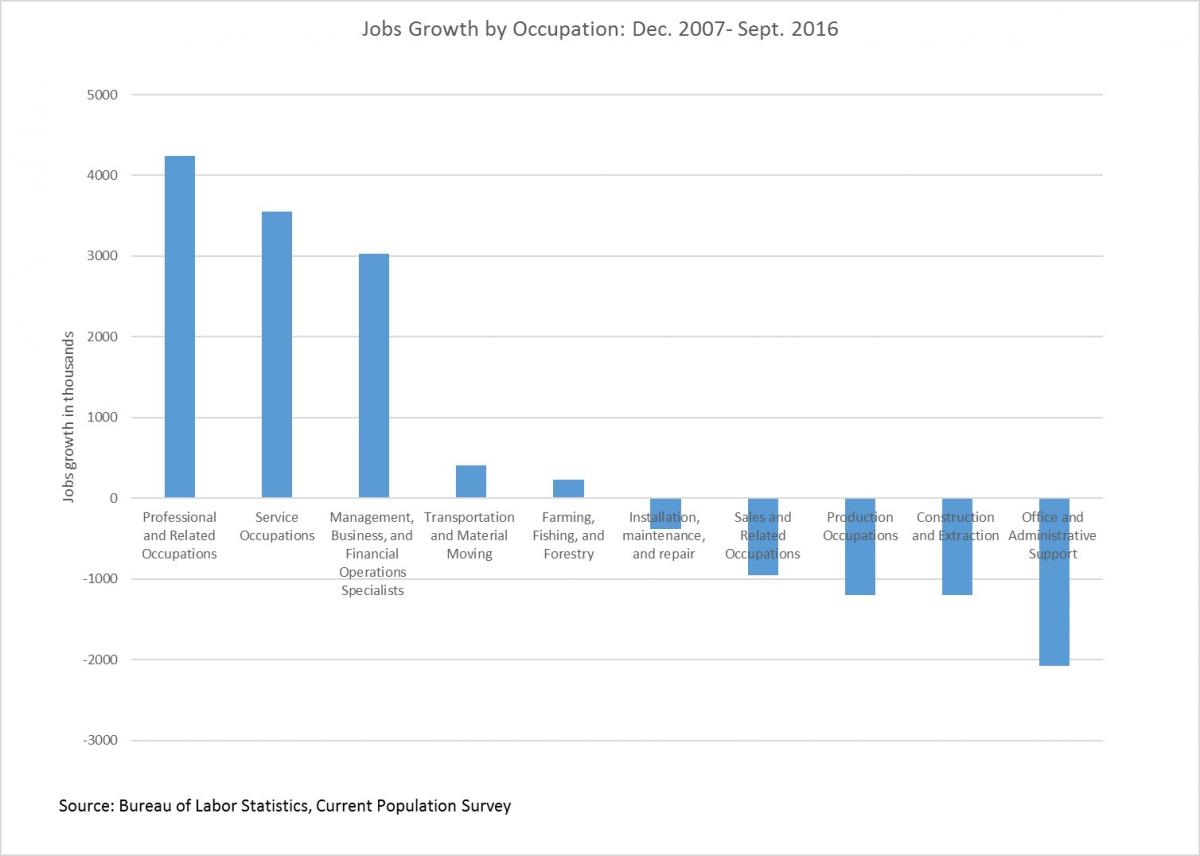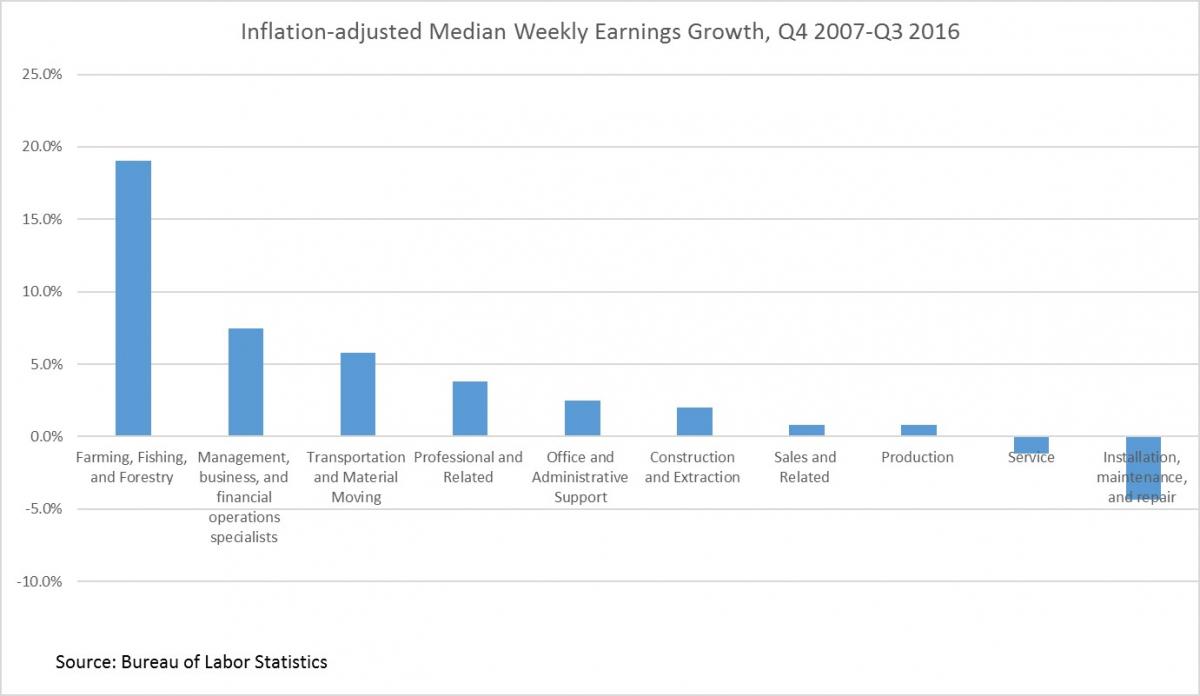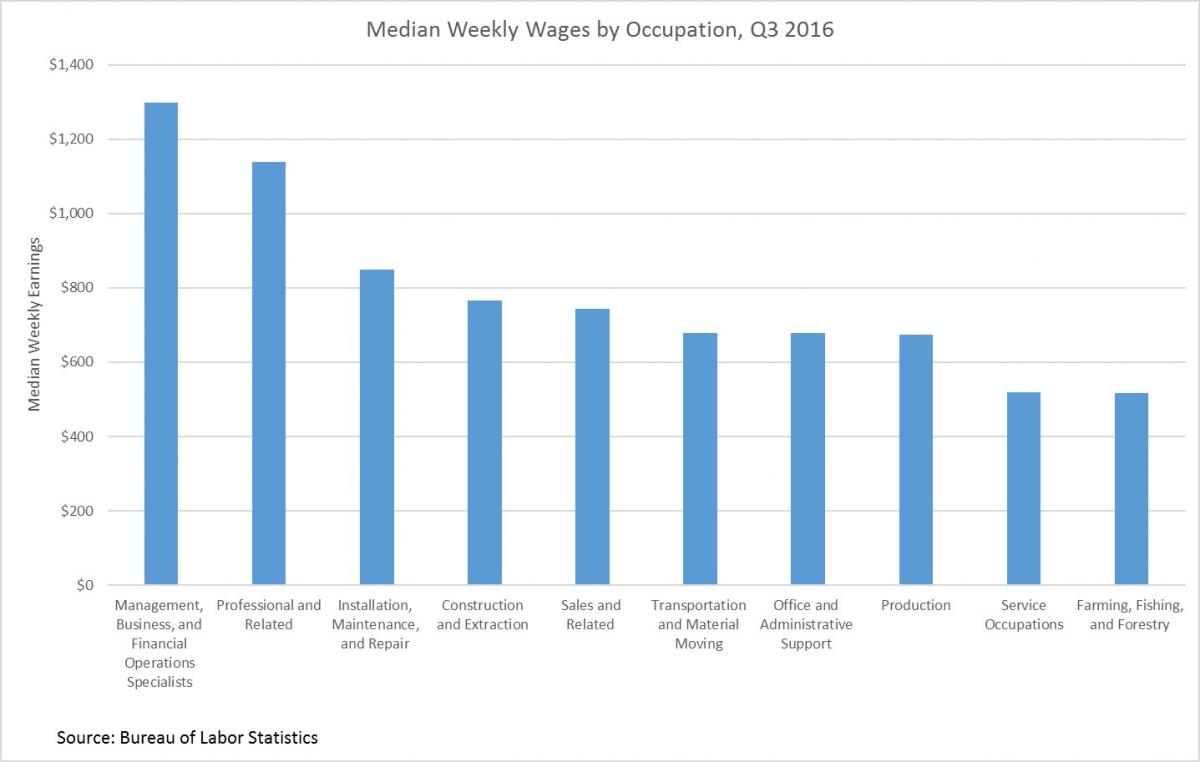In the 106 months since the beginning of the Great Recession in December of 2007, the economy has created 5.6 million new jobs, according to data from the Bureau of Labor Statistics Current Population Survey.
This represents a 3.9 percent increase in the jobs market throughout that time. Median weekly earnings for all employees increased 18.1 percent, to $827 in the third quarter of 2016 from $700 in the fourth quarter of 2007.
But the performance has been uneven — in terms of geography but also in terms of sector performance. Let’s take a look at the top and bottom 10 sectors, ranked according to change in number employed.
The Bureau of Labor Statistics breaks down the entire jobs market into 10 categories and subcategories of occupations. Of these 10, only five achieved jobs growth throughout this period.

The “professional and related” category experienced the highest jobs growth, in terms of raw numbers. Occupations in this sector include computer science, legal, education and health care practitioners. The 4.2 million jobs growth, to 34.9 million, represented a 13.9 percent increase from 30.6 million. Median weekly earnings in this category increased 18 percent, from $966 to $1,140.
The service industry experienced the second highest jobs growth. Occupations include fitness trainers, ushers and wait staff. The 3.5 million jobs growth represents a 15.1 percent increase. Median weekly earnings in this category increased 13 percent, from $460 to $520.
Rounding out the top three in terms of jobs growth is that encompassing “management, business and financial operations specialists.” Occupations in this sector include loan officers, purchasing agents and market research analysts. The 3 million jobs growth, to 24.7 million, to 24.7 million from 21.7 million, represented a 14 percent increase. This cluster of occupations continued to fetch the highest wages, increasing 21.6 percent to $1,298 from $1,067 weekly.
Cumulative inflation throughout this period was 14.2 percent. This eats away into most — and in some cases all — of the wage gains. Only three of these 10 sectors experienced a gain in real terms in excess of 5 percent. These three sectors account for just 23.2 percent of the workforce. In other words, only one in four jobs likely experienced a real increase in pay of more than 5 percent over the past nine years.

Perhaps most troubling is that the service industry represents the second largest occupation cluster. As mentioned before, this segment also experienced the second highest number of jobs added throughout this period.
Not only is this sector the second lowest paying of the 10 major categories ($520 weekly), but also it is one of only two sectors to experience a decline in real wages over the past nine years.
A broader concern is the jobs market for those without a college education. The data show a fairly robust market in professions most often requiring a higher education. However, the five sectors losing jobs since the beginning of the Great Recession are those with positions more likely to be filled by those without a college degree. More than 5.8 million jobs were lost in the following five sectors: 1) office and administrative support; 2) construction and extraction; 3) production; 4) sales; and 5) installation, maintenance and repair.
Many of these jobs were well paying, such as those in the construction and sales categories. The 3.6 million service sector jobs only partially mitigate those losses; in addition, the median weekly pay of just $520 pales in comparison to that available in construction, production, and equipment installation and repair.

This historically weak economic recovery has resulted in a particularly difficult jobs market in certain sectors most often open to those with less specialized education. The service sector is replacing some of these positions, but at lower wages. At the same time, the number of high paying jobs in business, management, and finance is growing along with wages in these sectors. The top line numbers released each month on jobs creation and the unemployment rate tell only part of this story.





